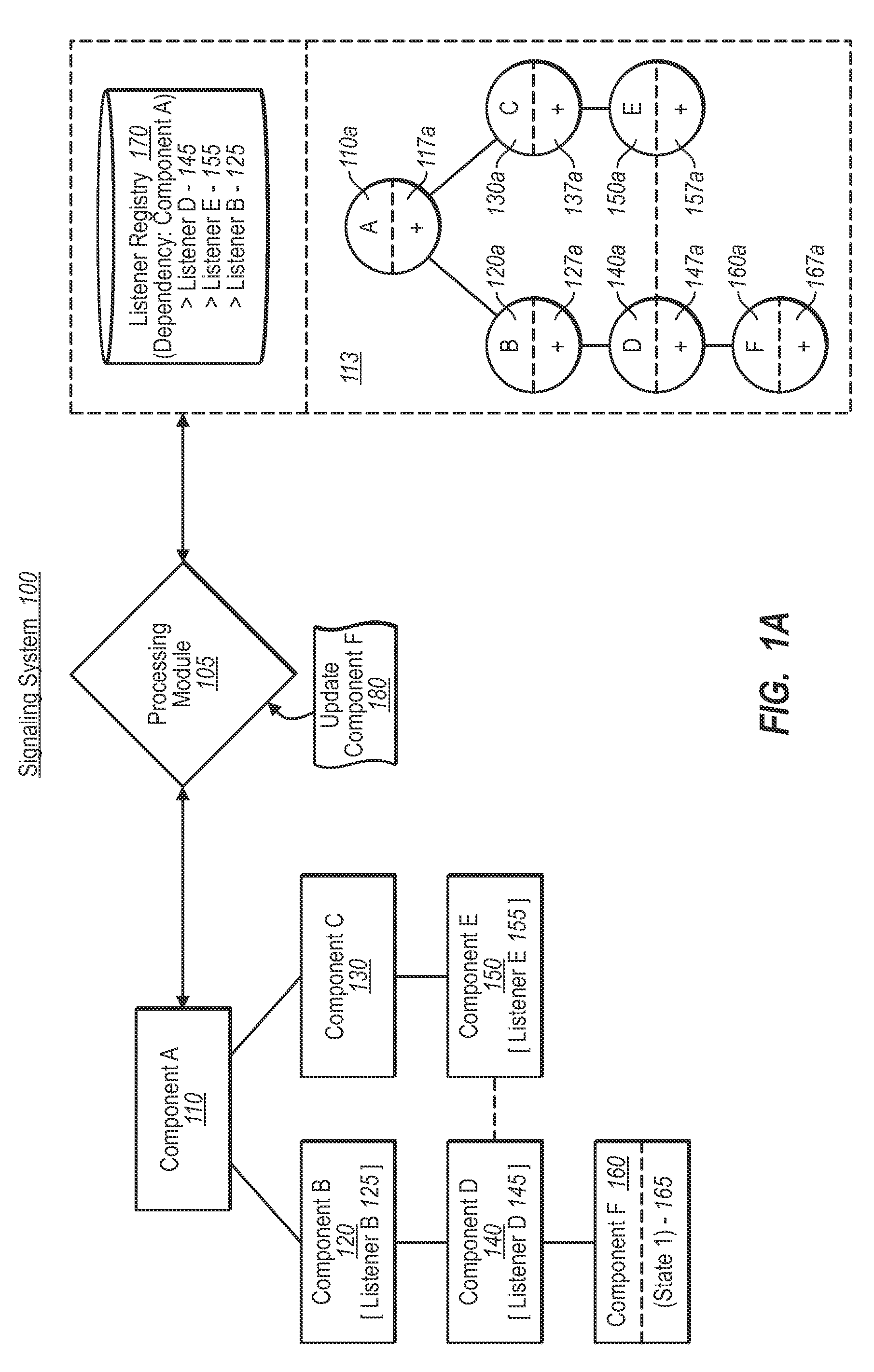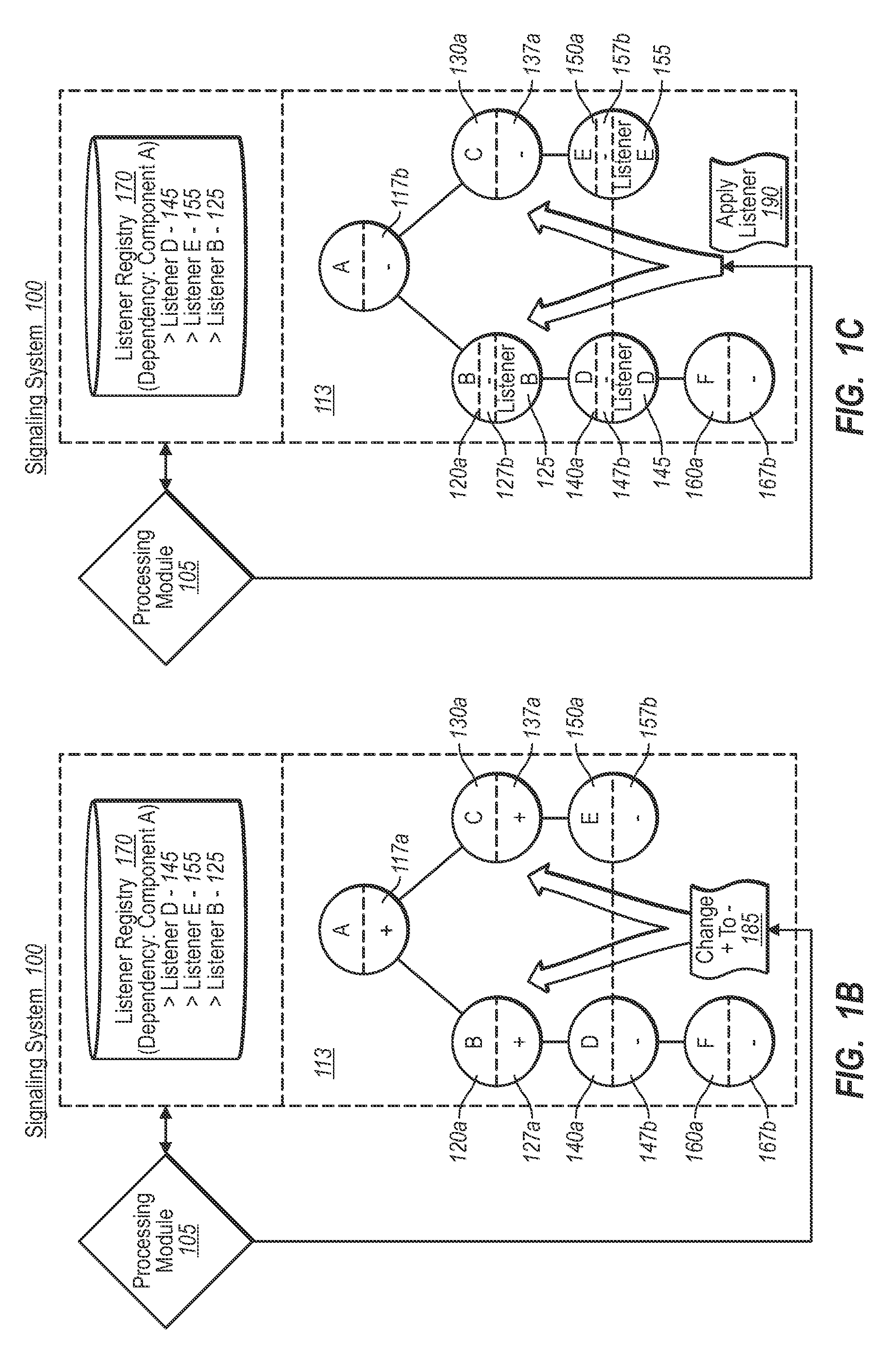Consistently signaling state changes
a signaling state and state change technology, applied in the field of consistent signaling state changes, can solve the problems of inordinate complexity of dependency chains, race conditions, and inability to guarantee accuracy
- Summary
- Abstract
- Description
- Claims
- Application Information
AI Technical Summary
Benefits of technology
Problems solved by technology
Method used
Image
Examples
Embodiment Construction
[0021]Implementations of the present invention extend to systems, methods, and computer program products that ensure a synchronized approach to delivering, reporting, and / or otherwise processing status / value changes in complex software dependency chains. In particular, implementations of the present invention include a two-phase approach in which the system establishes a node graph corresponding to dependency chain of software components, and only calls all listeners in the node graph after all nodes have been signaled. Thus, and since listeners can be called in dependency chain order, implementations of the present invention can ensure that all listeners receive values based on effectively the same state for the relevant source components, and in appropriate order, thus ensuring consistency.
[0022]As will be understood more fully herein, these and other advantages can be enabled at least in part using two-phase notification, and at-most-once notification delivery. In addition, a dir...
PUM
 Login to View More
Login to View More Abstract
Description
Claims
Application Information
 Login to View More
Login to View More - R&D
- Intellectual Property
- Life Sciences
- Materials
- Tech Scout
- Unparalleled Data Quality
- Higher Quality Content
- 60% Fewer Hallucinations
Browse by: Latest US Patents, China's latest patents, Technical Efficacy Thesaurus, Application Domain, Technology Topic, Popular Technical Reports.
© 2025 PatSnap. All rights reserved.Legal|Privacy policy|Modern Slavery Act Transparency Statement|Sitemap|About US| Contact US: help@patsnap.com



